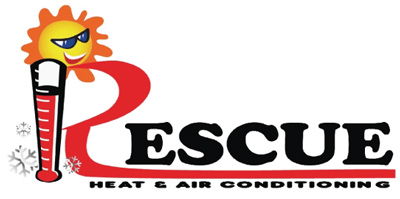Today’s homes are well sealed and insulated. While this makes them energy efficient, too little fresh air, indoor contaminants and nonstop recirculation can result in problems.
Don’t worry, though, since Rescue Heating & Air can help you have an energy-efficient home that’s also comfortable. Our services include an air quality audit and products to help improve indoor air quality in Alice, Texas.
Call us today to start refreshing your home’s air.

Clues Your Home Deals With Poor Indoor Air Quality
Is your home healthy? It might not be as healthy as you think. Pollution can be two to five times higher indoors compared to outdoors, as reported by the U.S. Environmental Protection Agency.
Indoor air pollutants moving in your home’s air may induce headaches and allergy flareups. And mold and mildew can trigger a variety of health issues.

Health Problems
While these types of symptoms could be caused by other issues, they can also be indicative your home has indoor air quality (IAQ) problems. This is particularly true if you feel better while you’re out of the house.
- Dry eyes, nose, throat or skin
- Headaches and sinus pressure
- Fatigue
- Allergies or asthma symptoms that are more severe than average
- Coughing and sneezing
- Dizziness or nausea
Environmental Problems
An outdated heating and cooling system will sometimes be contributing to indoor air quality problems, primarily if it’s struggling to filter air, balance humidity or keep temperatures consistent.
Here are some other signs you might need to refresh your indoor air:
- Excessive static or mold growth
- Large amounts of dust
- Stagnant or musty odors

How Can I Prevent Indoor Air Quality Problems?

Combating indoor air quality problems is fairly simple with the following 10 simple tips:
- Schedule an indoor air quality audit with Rescue Heating & Air. We’ll evaluate areas that influence air quality, such as humidity, carbon monoxide and volatile organic compounds (VOCs). Then we’ll review any problems we come across and how you can improve them.
- Clean on a regular basis to clear away dust mites, which can worsen allergies and asthma.
- Keep your home free of secondhand smoke.
- Get a whole-home filtration system to remove odors, rather than hiding them with air fresheners or scented candles. The contaminants include chemicals that can cause headaches or irritate respiratory symptoms.
- Air out gas-burning appliances, like stoves and water heaters, up and out.
- Keep your home’s humidity levels in check with a humidifier or dehumidifier, according to your needs. Adjust humidity under 50% to impede mold and mildew spores.
- Check your home for radon. Long-term exposure to this invisible radioactive gas is the number one cause of lung cancer amongst nonsmokers, as stated by the EPA. You can get a radon test kit online or get in contact with your state radon program for details on discounted or free kits.
- Utilize a ventilation system to replenish contaminated indoor air with fresh air from outside.
- Find natural cleaning and painting supplies that are low in or free of VOCs. Excess levels of VOCs can irritate symptoms for family members with respiratory diseases.
- Mount carbon monoxide detectors close to bedrooms.
Start Breathing Healthier Air Today with Rescue Heating & Air
With a full team of certified professionals and indoor air quality solutions, Rescue Heating & Air can help your family breathe easy. Give us a call or contact us online today to get started.
